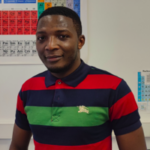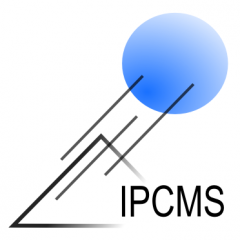Atomic-scale modeling in the area of material science is intended to provide a fundamental understanding of ….
ACTIVITES
The team works within the framework …
Membres de l’équipe :
Doctorant, Chimie des Matériaux Inorganiques (DCMI)achille.lambrecht@ipcms.unistra.fr
Tél: /Bureau: 110 (bât.33)
Doctorant, Chimie des Matériaux Inorganiques (DCMI)icare.morrotwoisard@ipcms.unistra.fr
Tél: /Bureau: 2011

Chargé de Recherche, Chimie des Matériaux Inorganiques (DCMI)Guido.Ori@ipcms.unistra.fr
Voir la page personnelleTél: /Bureau: 2004

Post-doctorant, Chimie des Matériaux Inorganiques (DCMI)stevedave.wansi@ipcms.unistra.fr
Tél: /Bureau: 2014
Publications récentes :
1839302
ORI
1
surface-science-reports
50
default
year
1528
https://www.ipcms.fr/plugins/zotpress/
%7B%22status%22%3A%22success%22%2C%22updateneeded%22%3Afalse%2C%22instance%22%3Afalse%2C%22meta%22%3A%7B%22request_last%22%3A450%2C%22request_next%22%3A50%2C%22used_cache%22%3Atrue%7D%2C%22data%22%3A%5B%7B%22key%22%3A%22D47GXXZ5%22%2C%22library%22%3A%7B%22id%22%3A1839302%7D%2C%22meta%22%3A%7B%22creatorSummary%22%3A%22Massobrio%20et%20al.%22%2C%22parsedDate%22%3A%222023%22%2C%22numChildren%22%3A2%7D%2C%22bib%22%3A%22%3Cdiv%20class%3D%5C%22csl-bib-body%5C%22%20style%3D%5C%22line-height%3A%201.35%3B%20%5C%22%3E%5Cn%20%20%3Cdiv%20class%3D%5C%22csl-entry%5C%22%20style%3D%5C%22clear%3A%20left%3B%20%5C%22%3E%5Cn%20%20%20%20%3Cdiv%20class%3D%5C%22csl-left-margin%5C%22%20style%3D%5C%22float%3A%20left%3B%20padding-right%3A%200.5em%3B%20text-align%3A%20right%3B%20width%3A%201em%3B%5C%22%3E%5B1%5D%3C%5C%2Fdiv%3E%3Cdiv%20class%3D%5C%22csl-right-inline%5C%22%20style%3D%5C%22margin%3A%200%20.4em%200%201.5em%3B%5C%22%3EC.%20Massobrio%2C%20I.A.%20Essomba%2C%20M.%20Boero%2C%20C.%20Diarra%2C%20M.%20Guerboub%2C%20K.%20Ishisone%2C%20A.%20Lambrecht%2C%20E.%20Martin%2C%20I.%20Morrot-Woisard%2C%20G.%20Ori%2C%20C.%20Tugene%2C%20S.D.%20Wansi%20Wendji%2C%20On%20the%20Actual%20Difference%20between%20the%20Nos%26%23xE9%3B%20and%20the%20Nos%26%23xE9%3B-Hoover%20Thermostats%3A%20A%20Critical%20Review%20of%20Canonical%20Temperature%20Control%20by%20Molecular%20Dynamics%2C%20Physica%20Status%20Solidi%20B-Basic%20Solid%20State%20Physics%20261%20%282023%29%202300209.%20%3Ca%20class%3D%27zp-DOIURL%27%20href%3D%27https%3A%5C%2F%5C%2Fdoi.org%5C%2F10.1002%5C%2Fpssb.202300209%27%3Ehttps%3A%5C%2F%5C%2Fdoi.org%5C%2F10.1002%5C%2Fpssb.202300209%3C%5C%2Fa%3E.%3C%5C%2Fdiv%3E%5Cn%20%20%3C%5C%2Fdiv%3E%5Cn%3C%5C%2Fdiv%3E%22%2C%22data%22%3A%7B%22itemType%22%3A%22journalArticle%22%2C%22title%22%3A%22On%20the%20Actual%20Difference%20between%20the%20Nos%5Cu00e9%20and%20the%20Nos%5Cu00e9-Hoover%20Thermostats%3A%20A%20Critical%20Review%20of%20Canonical%20Temperature%20Control%20by%20Molecular%20Dynamics%22%2C%22creators%22%3A%5B%7B%22creatorType%22%3A%22author%22%2C%22firstName%22%3A%22Carlo%22%2C%22lastName%22%3A%22Massobrio%22%7D%2C%7B%22creatorType%22%3A%22author%22%2C%22firstName%22%3A%22Irene%20Amiehe%22%2C%22lastName%22%3A%22Essomba%22%7D%2C%7B%22creatorType%22%3A%22author%22%2C%22firstName%22%3A%22Mauro%22%2C%22lastName%22%3A%22Boero%22%7D%2C%7B%22creatorType%22%3A%22author%22%2C%22firstName%22%3A%22Cheick%22%2C%22lastName%22%3A%22Diarra%22%7D%2C%7B%22creatorType%22%3A%22author%22%2C%22firstName%22%3A%22Mohammed%22%2C%22lastName%22%3A%22Guerboub%22%7D%2C%7B%22creatorType%22%3A%22author%22%2C%22firstName%22%3A%22Kana%22%2C%22lastName%22%3A%22Ishisone%22%7D%2C%7B%22creatorType%22%3A%22author%22%2C%22firstName%22%3A%22Achille%22%2C%22lastName%22%3A%22Lambrecht%22%7D%2C%7B%22creatorType%22%3A%22author%22%2C%22firstName%22%3A%22Evelyne%22%2C%22lastName%22%3A%22Martin%22%7D%2C%7B%22creatorType%22%3A%22author%22%2C%22firstName%22%3A%22Icare%22%2C%22lastName%22%3A%22Morrot-Woisard%22%7D%2C%7B%22creatorType%22%3A%22author%22%2C%22firstName%22%3A%22Guido%22%2C%22lastName%22%3A%22Ori%22%7D%2C%7B%22creatorType%22%3A%22author%22%2C%22firstName%22%3A%22Christine%22%2C%22lastName%22%3A%22Tugene%22%7D%2C%7B%22creatorType%22%3A%22author%22%2C%22firstName%22%3A%22Steve%20Dave%22%2C%22lastName%22%3A%22Wansi%20Wendji%22%7D%5D%2C%22abstractNote%22%3A%22This%20article%20has%20to%20be%20intended%20both%20as%20a%20review%20and%20as%20an%20historical%20tribute%20to%20the%20ideas%20developed%20almost%2040%20years%20ago%20by%20S.%20Nose%2C%20establishing%20the%20theoretical%20foundations%20of%20the%20implementation%20and%20use%20of%20thermostats%20in%20molecular%20dynamics%20%28MDs%29.%20The%20original%20motivation%20of%20this%20work%20is%20enriched%20by%20an%20observation%20related%20to%20the%20connection%20between%20the%20Nose%20seminal%20expression%20of%20temperature%20control%20and%20the%20extension%20proposed%20in%201985%20by%20W.%20G.%20Hoover%2C%20known%20as%20the%20Nose-Hoover%20thermostat.%20By%20carefully%20rederiving%20the%20equations%20of%20motion%20in%20both%20formalisms%2C%20it%20appears%20that%20all%20features%20of%20Nose-Hoover%20framework%20%28replacement%20of%20the%20Nose%20variables%20by%20a%20single%20friction%20coefficient%20in%20the%20equations%20of%20motion%29%20are%20already%20built%20in%20the%20Nose%20approach.%20Therefore%2C%20one%20is%20able%20to%20work%20directly%20within%20the%20Nose%20formalism%20with%20the%20addition%20of%20a%20single%20variable%20only%2C%20by%20greatly%20extending%20its%20general%20impact%20and%20simplicity%20and%20somewhat%20making%20redundant%20the%20Nose-Hoover%20extension.%20Having%20been%20implicitly%20%28and%20somewhat%20inadvertently%29%20put%20to%20good%20use%20by%20a%20multitude%20of%20users%20over%20the%20past%2040%20years%20%28in%20the%20context%20of%20classical%20and%20first-principles%20MDs%29%2C%20this%20finding%20does%20not%20need%20any%20specific%20application%20to%20be%20assessed.This%20paper%20is%20both%20a%20review%20and%20historical%20tribute%20to%20the%20ideas%20developed%20almost%2040%20years%20ago%20by%20S.%20Nose%20establishing%20the%20theoretical%20foundations%20of%20implementation%20and%20use%20of%20thermostats%20in%20molecular%20dynamics.%20By%20carefully%20rederiving%20the%20equations%20of%20motion%20in%20both%20formalisms%2C%20it%20appears%20that%20all%20features%20of%20Nose-Hoover%20framework%20%28replacement%20of%20the%20Nose%20variables%20by%20a%20single-friction%20coefficient%20in%20the%20equations%20of%20motion%29%20are%20already%20built%20in%20the%20Nose%20approach.image%20%28c%29%202023%20WILEY-VCH%20GmbH%22%2C%22date%22%3A%222023%22%2C%22language%22%3A%22English%22%2C%22DOI%22%3A%2210.1002%5C%2Fpssb.202300209%22%2C%22ISSN%22%3A%220370-1972%22%2C%22url%22%3A%22http%3A%5C%2F%5C%2Fdx.doi.org%5C%2F10.1002%5C%2Fpssb.202300209%22%2C%22collections%22%3A%5B%22NZSFH59F%22%2C%22CF4ZI7HM%22%5D%2C%22dateModified%22%3A%222025-02-14T13%3A30%3A26Z%22%7D%7D%2C%7B%22key%22%3A%22NFVBLTLC%22%2C%22library%22%3A%7B%22id%22%3A1839302%7D%2C%22meta%22%3A%7B%22creatorSummary%22%3A%22Gentili%20and%20Ori%22%2C%22parsedDate%22%3A%222022%22%2C%22numChildren%22%3A1%7D%2C%22bib%22%3A%22%3Cdiv%20class%3D%5C%22csl-bib-body%5C%22%20style%3D%5C%22line-height%3A%201.35%3B%20%5C%22%3E%5Cn%20%20%3Cdiv%20class%3D%5C%22csl-entry%5C%22%20style%3D%5C%22clear%3A%20left%3B%20%5C%22%3E%5Cn%20%20%20%20%3Cdiv%20class%3D%5C%22csl-left-margin%5C%22%20style%3D%5C%22float%3A%20left%3B%20padding-right%3A%200.5em%3B%20text-align%3A%20right%3B%20width%3A%201em%3B%5C%22%3E%5B1%5D%3C%5C%2Fdiv%3E%3Cdiv%20class%3D%5C%22csl-right-inline%5C%22%20style%3D%5C%22margin%3A%200%20.4em%200%201.5em%3B%5C%22%3ED.%20Gentili%2C%20G.%20Ori%2C%20Reversible%20assembly%20of%20nanoparticles%3A%20theory%2C%20strategies%20and%20computational%20simulations.%2C%20Nanoscale%2014%20%282022%29%2014385%26%23x2013%3B14432.%20%3Ca%20class%3D%27zp-DOIURL%27%20href%3D%27https%3A%5C%2F%5C%2Fdoi.org%5C%2F10.1039%5C%2Fd2nr02640f%27%3Ehttps%3A%5C%2F%5C%2Fdoi.org%5C%2F10.1039%5C%2Fd2nr02640f%3C%5C%2Fa%3E.%3C%5C%2Fdiv%3E%5Cn%20%20%3C%5C%2Fdiv%3E%5Cn%3C%5C%2Fdiv%3E%22%2C%22data%22%3A%7B%22itemType%22%3A%22journalArticle%22%2C%22title%22%3A%22Reversible%20assembly%20of%20nanoparticles%3A%20theory%2C%20strategies%20and%20computational%20simulations.%22%2C%22creators%22%3A%5B%7B%22creatorType%22%3A%22author%22%2C%22firstName%22%3A%22Denis%22%2C%22lastName%22%3A%22Gentili%22%7D%2C%7B%22creatorType%22%3A%22author%22%2C%22firstName%22%3A%22Guido%22%2C%22lastName%22%3A%22Ori%22%7D%5D%2C%22abstractNote%22%3A%22The%20significant%20advances%20in%20synthesis%20and%20functionalization%20have%20enabled%20the%20preparation%20of%20high-quality%20nanoparticles%20that%20have%20found%20a%20plethora%20of%20successful%20applications.%20The%20unique%20physicochemical%20properties%20of%20nanoparticles%20can%20be%20manipulated%20through%20the%20control%20of%20size%2C%20shape%2C%20composition%2C%20and%20surface%20chemistry%2C%20but%20their%20technological%20application%20possibilities%20can%20be%20further%20expanded%20by%20exploiting%20the%20properties%20that%20emerge%20from%20their%20assembly.%20The%20ability%20to%20control%20the%20assembly%20of%20nanoparticles%20not%20only%20is%20required%20for%20many%20real%20technological%20applications%2C%20but%20allows%20the%20combination%20of%20the%20intrinsic%20properties%20of%20nanoparticles%20and%20opens%20the%20way%20to%20the%20exploitation%20of%20their%20complex%20interplay%2C%20giving%20access%20to%20collective%20properties.%20Significant%20advances%20and%20knowledge%20gained%20over%20the%20past%20few%20decades%20on%20nanoparticle%20assembly%20have%20made%20it%20possible%20to%20implement%20a%20growing%20number%20of%20strategies%20for%20reversible%20assembly%20of%20nanoparticles.%20In%20addition%20to%20being%20of%20interest%20for%20basic%20studies%2C%20such%20advances%20further%20broaden%20the%20range%20of%20applications%20and%20the%20possibility%20of%20developing%20innovative%20devices%20using%20nanoparticles.%20This%20review%20focuses%20on%20the%20reversible%20assembly%20of%20nanoparticles%20and%20includes%20the%20theoretical%20aspects%20related%20to%20the%20concept%20of%20reversibility%2C%20an%20up-to-date%20assessment%20of%20the%20experimental%20approaches%20applied%20to%20this%20field%20and%20the%20advanced%20computational%20schemes%20that%20offer%20key%20insights%20into%20the%20assembly%20mechanisms.%20We%20aim%20to%20provide%20readers%20with%20a%20comprehensive%20guide%20to%20address%20the%20challenges%20in%20assembling%20reversible%20nanoparticles%20and%20promote%20their%20applications.%22%2C%22date%22%3A%222022%22%2C%22language%22%3A%22English%22%2C%22DOI%22%3A%2210.1039%5C%2Fd2nr02640f%22%2C%22ISSN%22%3A%222040-3372%22%2C%22url%22%3A%22http%3A%5C%2F%5C%2Fdx.doi.org%5C%2F10.1039%5C%2Fd2nr02640f%22%2C%22collections%22%3A%5B%22NZSFH59F%22%2C%22CF4ZI7HM%22%5D%2C%22dateModified%22%3A%222025-02-14T12%3A40%3A00Z%22%7D%7D%2C%7B%22key%22%3A%22GYNJLGE3%22%2C%22library%22%3A%7B%22id%22%3A1839302%7D%2C%22meta%22%3A%7B%22creatorSummary%22%3A%22Shuaib%20et%20al.%22%2C%22parsedDate%22%3A%222025%22%2C%22numChildren%22%3A1%7D%2C%22bib%22%3A%22%3Cdiv%20class%3D%5C%22csl-bib-body%5C%22%20style%3D%5C%22line-height%3A%201.35%3B%20%5C%22%3E%5Cn%20%20%3Cdiv%20class%3D%5C%22csl-entry%5C%22%20style%3D%5C%22clear%3A%20left%3B%20%5C%22%3E%5Cn%20%20%20%20%3Cdiv%20class%3D%5C%22csl-left-margin%5C%22%20style%3D%5C%22float%3A%20left%3B%20padding-right%3A%200.5em%3B%20text-align%3A%20right%3B%20width%3A%201em%3B%5C%22%3E%5B1%5D%3C%5C%2Fdiv%3E%3Cdiv%20class%3D%5C%22csl-right-inline%5C%22%20style%3D%5C%22margin%3A%200%20.4em%200%201.5em%3B%5C%22%3EF.%20Shuaib%2C%20G.%20Ori%2C%20P.%20Thomas%2C%20O.%20Masson%2C%20A.%20Bouzid%2C%20Multikernel%20similarity-based%20clustering%20of%20amorphous%20systems%20and%20machine-learned%20interatomic%20potentials%20by%20active%20learning%2C%20Journal%20of%20the%20American%20Ceramic%20Society%20108%20%282025%29%20e20128.%20%3Ca%20class%3D%27zp-DOIURL%27%20href%3D%27https%3A%5C%2F%5C%2Fdoi.org%5C%2F10.1111%5C%2Fjace.20128%27%3Ehttps%3A%5C%2F%5C%2Fdoi.org%5C%2F10.1111%5C%2Fjace.20128%3C%5C%2Fa%3E.%3C%5C%2Fdiv%3E%5Cn%20%20%3C%5C%2Fdiv%3E%5Cn%3C%5C%2Fdiv%3E%22%2C%22data%22%3A%7B%22itemType%22%3A%22journalArticle%22%2C%22title%22%3A%22Multikernel%20similarity-based%20clustering%20of%20amorphous%20systems%20and%20machine-learned%20interatomic%20potentials%20by%20active%20learning%22%2C%22creators%22%3A%5B%7B%22creatorType%22%3A%22author%22%2C%22firstName%22%3A%22Firas%22%2C%22lastName%22%3A%22Shuaib%22%7D%2C%7B%22creatorType%22%3A%22author%22%2C%22firstName%22%3A%22Guido%22%2C%22lastName%22%3A%22Ori%22%7D%2C%7B%22creatorType%22%3A%22author%22%2C%22firstName%22%3A%22Philippe%22%2C%22lastName%22%3A%22Thomas%22%7D%2C%7B%22creatorType%22%3A%22author%22%2C%22firstName%22%3A%22Olivier%22%2C%22lastName%22%3A%22Masson%22%7D%2C%7B%22creatorType%22%3A%22author%22%2C%22firstName%22%3A%22Assil%22%2C%22lastName%22%3A%22Bouzid%22%7D%5D%2C%22abstractNote%22%3A%22We%20present%20a%20hybrid%20similarity%20kernel%20that%20exemplifies%20the%20integration%20of%20short-%20and%20long-range%20descriptors%20via%20the%20use%20of%20an%20average%20kernel%20approach.%20This%20technique%20allows%20for%20a%20direct%20measure%20of%20the%20similarity%20between%20amorphous%20configurations%2C%20and%20when%20combined%20with%20an%20active%20learning%20%28AL%29%20spectral%20clustering%20approach%2C%20it%20leads%20to%20a%20classification%20of%20the%20amorphous%20configurations%20into%20uncorrelated%20clusters.%20Subsequently%2C%20a%20minimum%20size%20database%20is%20built%20by%20considering%20a%20small%20fraction%20of%20configurations%20belonging%20to%20each%20cluster%20and%20a%20machine%20learning%20interatomic%20potential%20%28MLIP%29%2C%20within%20the%20Gaussian%20approximation%20scheme%2C%20is%20fitted%20by%20relying%20on%20a%20Bayesian%20optimization%20of%20the%20potential%20hyperparameters.%20This%20step%20is%20embedded%20within%20an%20AL%20loop%20that%20allows%20to%20sequentially%20increase%20the%20size%20of%20the%20learning%20database%20whenever%20the%20MLIP%20fails%20to%20meet%20a%20predefined%20energy%20convergence%20threshold.%20As%20such%2C%20MLIP%20are%20fitted%20in%20an%20almost%20fully%20automatized%20fashion.%20This%20approach%20is%20tested%20on%20two%20diverse%20amorphous%20systems%20that%20were%20previously%20generated%20using%20first-principles%20molecular%20dynamics.%20Accurate%20potentials%20with%20less%20than%202%20meV%5C%2Fatom%20root%20mean%20square%20energy%20error%20compared%20to%20the%20reference%20data%20are%20obtained.%20This%20accuracy%20is%20achieved%20with%20only%20175%20configurations%20sampling%20the%20studied%20systems%20at%20various%20temperatures.%20The%20robustness%20of%20these%20potentials%20is%20then%20confirmed%20by%20producing%20models%20with%20several%20thousands%20of%20atoms%20featuring%20a%20good%20agreement%20with%20reference%20ab%20initio%20and%20experimental%20data.%22%2C%22date%22%3A%222025%22%2C%22language%22%3A%22English%22%2C%22DOI%22%3A%2210.1111%5C%2Fjace.20128%22%2C%22ISSN%22%3A%220002-7820%22%2C%22url%22%3A%22http%3A%5C%2F%5C%2Fdx.doi.org%5C%2F10.1111%5C%2Fjace.20128%22%2C%22collections%22%3A%5B%22NZSFH59F%22%2C%22CF4ZI7HM%22%5D%2C%22dateModified%22%3A%222024-11-08T10%3A44%3A16Z%22%7D%7D%2C%7B%22key%22%3A%22MGVK9RHI%22%2C%22library%22%3A%7B%22id%22%3A1839302%7D%2C%22meta%22%3A%7B%22creatorSummary%22%3A%22Barbalinardo%20et%20al.%22%2C%22parsedDate%22%3A%222024%22%2C%22numChildren%22%3A1%7D%2C%22bib%22%3A%22%3Cdiv%20class%3D%5C%22csl-bib-body%5C%22%20style%3D%5C%22line-height%3A%201.35%3B%20%5C%22%3E%5Cn%20%20%3Cdiv%20class%3D%5C%22csl-entry%5C%22%20style%3D%5C%22clear%3A%20left%3B%20%5C%22%3E%5Cn%20%20%20%20%3Cdiv%20class%3D%5C%22csl-left-margin%5C%22%20style%3D%5C%22float%3A%20left%3B%20padding-right%3A%200.5em%3B%20text-align%3A%20right%3B%20width%3A%201em%3B%5C%22%3E%5B1%5D%3C%5C%2Fdiv%3E%3Cdiv%20class%3D%5C%22csl-right-inline%5C%22%20style%3D%5C%22margin%3A%200%20.4em%200%201.5em%3B%5C%22%3EM.%20Barbalinardo%2C%20G.%20Ori%2C%20L.%20Lungaro%2C%20G.%20Caio%2C%20A.%20Migliori%2C%20D.%20Gentili%2C%20Direct%20Cationization%20of%20Citrate-Coated%20Gold%20and%20Silver%20Nanoparticles%2C%20Journal%20of%20Physical%20Chemistry%20C%20128%20%282024%29%2016220%26%23x2013%3B16226.%20%3Ca%20class%3D%27zp-DOIURL%27%20href%3D%27https%3A%5C%2F%5C%2Fdoi.org%5C%2F10.1021%5C%2Facs.jpcc.4c04931%27%3Ehttps%3A%5C%2F%5C%2Fdoi.org%5C%2F10.1021%5C%2Facs.jpcc.4c04931%3C%5C%2Fa%3E.%3C%5C%2Fdiv%3E%5Cn%20%20%3C%5C%2Fdiv%3E%5Cn%3C%5C%2Fdiv%3E%22%2C%22data%22%3A%7B%22itemType%22%3A%22journalArticle%22%2C%22title%22%3A%22Direct%20Cationization%20of%20Citrate-Coated%20Gold%20and%20Silver%20Nanoparticles%22%2C%22creators%22%3A%5B%7B%22creatorType%22%3A%22author%22%2C%22firstName%22%3A%22Marianna%22%2C%22lastName%22%3A%22Barbalinardo%22%7D%2C%7B%22creatorType%22%3A%22author%22%2C%22firstName%22%3A%22Guido%22%2C%22lastName%22%3A%22Ori%22%7D%2C%7B%22creatorType%22%3A%22author%22%2C%22firstName%22%3A%22Lisa%22%2C%22lastName%22%3A%22Lungaro%22%7D%2C%7B%22creatorType%22%3A%22author%22%2C%22firstName%22%3A%22Giacomo%22%2C%22lastName%22%3A%22Caio%22%7D%2C%7B%22creatorType%22%3A%22author%22%2C%22firstName%22%3A%22Andrea%22%2C%22lastName%22%3A%22Migliori%22%7D%2C%7B%22creatorType%22%3A%22author%22%2C%22firstName%22%3A%22Denis%22%2C%22lastName%22%3A%22Gentili%22%7D%5D%2C%22abstractNote%22%3A%22Nanoparticles%20have%20emerged%20as%20promising%20materials%20for%20a%20wide%20range%20of%20applications%2C%20including%20biomedicine%2C%20energy%2C%20and%20electronics.%20However%2C%20controlling%20their%20surface%20chemistry%20is%20essential%20to%20fully%20harnessing%20their%20potential%2C%20as%20it%20affects%20their%20physicochemical%20properties%2C%20stability%2C%20and%20interactions%20with%20biological%20systems.%20Surface%20functionalization%20is%20a%20key%20process%20enabling%20the%20adaptation%20of%20nanoparticle%20properties%20to%20specific%20applications.%20While%20introducing%20ligands%20during%20nanoparticle%20synthesis%20may%20not%20always%20be%20feasible%2C%20ligand%20exchange%20offers%20versatility%20in%20controlling%20surface%20chemistry.%20However%2C%20the%20direct%20replacement%20of%20negatively%20charged%20citrate%20on%20gold%20and%20silver%20nanoparticles%20with%20its%20positive%20counterparts%20often%20leads%20to%20particle%20aggregation.%20Here%2C%20we%20present%20a%20straightforward%20one-step%20ligand%20exchange%20method%20to%20functionalize%20citrate-coated%20gold%20and%20silver%20nanoparticles%20with%20cationic%20ligands.%20By%20controlling%20citrate%20molecule%20protonation%2C%20we%20prevent%20nanoparticle%20aggregation%2C%20enabling%20successful%20displacement%20with%20positively%20charged%20alkanethiol%20ligands.%20Dynamic%20light%20scattering%2C%20zeta-potential%20measurement%2C%20and%20transmission%20electron%20microscopy%20alongside%20theoretical%20models%20provide%20comprehensive%20insights%20into%20the%20mechanism%20and%20dynamics%20of%20ligand%20exchange.%20Furthermore%2C%20we%20demonstrate%20the%20impact%20of%20surface%20functionalization%20of%20nanoparticles%20on%20the%20cytotoxic%20activity%20of%20nanoparticles%20in%20model%20cell%20lines%2C%20underscoring%20the%20significance%20of%20the%20surface%20chemistry%20of%20nanoparticles%20for%20their%20biomedical%20applications.%22%2C%22date%22%3A%222024%22%2C%22language%22%3A%22English%22%2C%22DOI%22%3A%2210.1021%5C%2Facs.jpcc.4c04931%22%2C%22ISSN%22%3A%221932-7447%22%2C%22url%22%3A%22http%3A%5C%2F%5C%2Fdx.doi.org%5C%2F10.1021%5C%2Facs.jpcc.4c04931%22%2C%22collections%22%3A%5B%22NZSFH59F%22%2C%22CF4ZI7HM%22%2C%22ZMH8G5EH%22%5D%2C%22dateModified%22%3A%222024-11-08T10%3A30%3A40Z%22%7D%7D%2C%7B%22key%22%3A%2295DD7DXP%22%2C%22library%22%3A%7B%22id%22%3A1839302%7D%2C%22meta%22%3A%7B%22creatorSummary%22%3A%22Wendji%20et%20al.%22%2C%22parsedDate%22%3A%222024%22%2C%22numChildren%22%3A1%7D%2C%22bib%22%3A%22%3Cdiv%20class%3D%5C%22csl-bib-body%5C%22%20style%3D%5C%22line-height%3A%201.35%3B%20%5C%22%3E%5Cn%20%20%3Cdiv%20class%3D%5C%22csl-entry%5C%22%20style%3D%5C%22clear%3A%20left%3B%20%5C%22%3E%5Cn%20%20%20%20%3Cdiv%20class%3D%5C%22csl-left-margin%5C%22%20style%3D%5C%22float%3A%20left%3B%20padding-right%3A%200.5em%3B%20text-align%3A%20right%3B%20width%3A%201em%3B%5C%22%3E%5B1%5D%3C%5C%2Fdiv%3E%3Cdiv%20class%3D%5C%22csl-right-inline%5C%22%20style%3D%5C%22margin%3A%200%20.4em%200%201.5em%3B%5C%22%3ES.D.W.%20Wendji%2C%20C.%20Massobrio%2C%20M.%20Boero%2C%20C.%20Tug%26%23xE8%3Bne%2C%20E.%20Levchenko%2C%20F.%20Shuaib%2C%20R.%20Piotrowski%2C%20D.%20Hamani%2C%20G.%20Delaizir%2C%20P.-M.%20Geffroy%2C%20P.%20Thomas%2C%20O.%20Masson%2C%20A.%20Bouzid%2C%20G.%20Ori%2C%20Quantitative%20assessment%20of%20the%20structure%20and%20bonding%20properties%20of%2050VxOy-50P2O5%20glass%20by%20classical%20and%20Born-Oppenheimer%20molecular%20dynamics%2C%20Journal%20of%20Non-Crystalline%20Solids%20634%20%282024%29%20122967.%20%3Ca%20class%3D%27zp-DOIURL%27%20href%3D%27https%3A%5C%2F%5C%2Fdoi.org%5C%2F10.1016%5C%2Fj.jnoncrysol.2024.122967%27%3Ehttps%3A%5C%2F%5C%2Fdoi.org%5C%2F10.1016%5C%2Fj.jnoncrysol.2024.122967%3C%5C%2Fa%3E.%3C%5C%2Fdiv%3E%5Cn%20%20%3C%5C%2Fdiv%3E%5Cn%3C%5C%2Fdiv%3E%22%2C%22data%22%3A%7B%22itemType%22%3A%22journalArticle%22%2C%22title%22%3A%22Quantitative%20assessment%20of%20the%20structure%20and%20bonding%20properties%20of%2050VxOy-50P2O5%20glass%20by%20classical%20and%20Born-Oppenheimer%20molecular%20dynamics%22%2C%22creators%22%3A%5B%7B%22creatorType%22%3A%22author%22%2C%22firstName%22%3A%22S.%20D.%20Wansi%22%2C%22lastName%22%3A%22Wendji%22%7D%2C%7B%22creatorType%22%3A%22author%22%2C%22firstName%22%3A%22Carlo%22%2C%22lastName%22%3A%22Massobrio%22%7D%2C%7B%22creatorType%22%3A%22author%22%2C%22firstName%22%3A%22Mauro%22%2C%22lastName%22%3A%22Boero%22%7D%2C%7B%22creatorType%22%3A%22author%22%2C%22firstName%22%3A%22Christine%22%2C%22lastName%22%3A%22Tug%5Cu00e8ne%22%7D%2C%7B%22creatorType%22%3A%22author%22%2C%22firstName%22%3A%22E.%22%2C%22lastName%22%3A%22Levchenko%22%7D%2C%7B%22creatorType%22%3A%22author%22%2C%22firstName%22%3A%22F.%22%2C%22lastName%22%3A%22Shuaib%22%7D%2C%7B%22creatorType%22%3A%22author%22%2C%22firstName%22%3A%22R.%22%2C%22lastName%22%3A%22Piotrowski%22%7D%2C%7B%22creatorType%22%3A%22author%22%2C%22firstName%22%3A%22D.%22%2C%22lastName%22%3A%22Hamani%22%7D%2C%7B%22creatorType%22%3A%22author%22%2C%22firstName%22%3A%22G.%22%2C%22lastName%22%3A%22Delaizir%22%7D%2C%7B%22creatorType%22%3A%22author%22%2C%22firstName%22%3A%22P.%20-M.%22%2C%22lastName%22%3A%22Geffroy%22%7D%2C%7B%22creatorType%22%3A%22author%22%2C%22firstName%22%3A%22P.%22%2C%22lastName%22%3A%22Thomas%22%7D%2C%7B%22creatorType%22%3A%22author%22%2C%22firstName%22%3A%22O.%22%2C%22lastName%22%3A%22Masson%22%7D%2C%7B%22creatorType%22%3A%22author%22%2C%22firstName%22%3A%22A.%22%2C%22lastName%22%3A%22Bouzid%22%7D%2C%7B%22creatorType%22%3A%22author%22%2C%22firstName%22%3A%22Guido%22%2C%22lastName%22%3A%22Ori%22%7D%5D%2C%22abstractNote%22%3A%22The%20structure%20and%20bonding%20of%20VxOy-P2O5%20%28VP50%29%20glass%20is%20studied%20by%20classical%20and%20Born-Oppenheimer%20molecular%20dynamics%20%28CMD%20and%20BOMD%29.%20By%20testing%20the%20performance%20of%20three%20different%20empirical%20CMD%20force%20fields%20sets%20and%20through%20a%20thorough%20comparison%20with%20experimental%20data%2C%20our%20study%20showcases%20the%20effectiveness%20of%20BOMD%20in%20addressing%20the%20shortcomings%20of%20CMD%20and%20achieves%20a%20significantly%20improved%20and%20superior%20quantitative%20description%20of%20VP50%20glass%27%20structures.%20BOMD%20allows%20us%20to%20achieve%20an%20unprecedented%20agreement%20with%20experimental%20data%20in%20terms%20of%20both%20reciprocal%20space%20%28neutron%20and%20X-ray%20structure%20factors%29%20and%20real%20space%20%28total%20pair%20correlation%20functions%29%20properties.%20The%20key%20improvement%20is%20ascribed%20to%20a%20better%20description%20of%20the%20local%20electronic%20and%20bonding%20environment%20around%20both%20P%20and%2C%20especially%2C%20V%20sites%20that%20cannot%20be%20obtained%20by%20empirical%20force%20fields.%20A%20clear%20signature%20of%20single%20V-O%20and%20double%20V%3DO%20bonds%20is%20found%20with%20BOMD%20together%20with%20an%20overall%20better%20description%20of%20VO%20coordinating%20polyhedra%20distribution%20that%20constitute%20the%20network%20of%20this%20glass.%20Our%20study%20is%20enriched%20by%20a%20thorough%20analysis%20of%20bond%20angle%20distributions%20around%20VO%20units%2C%20order%20and%20connectivity%20parameters%20and%20local%20bonding%20features%20based%20on%20Wannier%20functions%20formalism.%20As%20a%20byproduct%20of%20this%20work%2C%20we%20assessed%20which%20CMD%20scheme%20aligns%20more%20closely%20with%20the%20BOMD%20data%20and%20experimental%20findings.%20Our%20analysis%20revealed%20that%20including%20three-body%20potential%20parameters%20associated%20with%20the%20local%20environment%20of%20V%20sites%20significantly%20improves%20the%20performance%20of%20CMD.%20However%2C%20while%20enhanced%2C%20CMD%20still%20falls%20short%20of%20achieving%20the%20full%20accuracy%20demonstrated%20by%20BOMD%20in%20describing%20VP50%20glass.%20All%20together%2C%20the%20results%20found%20define%20the%20computational%20grounds%20for%20a%20deep%20understating%20of%20VP%20amorphous%20glasses%20in%20conjunctions%20with%20depicting%20the%20necessary%20requirements%20for%20the%20development%20of%20interatomic%20potentials%20aiming%20to%20a%20quantitative%20comprehension%20and%20design%20of%20VP-based%20amorphous%20materials.%22%2C%22date%22%3A%222024%22%2C%22language%22%3A%22%22%2C%22DOI%22%3A%2210.1016%5C%2Fj.jnoncrysol.2024.122967%22%2C%22ISSN%22%3A%220022-3093%22%2C%22url%22%3A%22http%3A%5C%2F%5C%2Fdx.doi.org%5C%2F10.1016%5C%2Fj.jnoncrysol.2024.122967%22%2C%22collections%22%3A%5B%22NZSFH59F%22%2C%22CF4ZI7HM%22%2C%22ZMH8G5EH%22%5D%2C%22dateModified%22%3A%222024-09-13T09%3A22%3A12Z%22%7D%7D%2C%7B%22key%22%3A%22VDSXEDFS%22%2C%22library%22%3A%7B%22id%22%3A1839302%7D%2C%22meta%22%3A%7B%22creatorSummary%22%3A%22Lambrecht%20et%20al.%22%2C%22parsedDate%22%3A%222024%22%2C%22numChildren%22%3A1%7D%2C%22bib%22%3A%22%3Cdiv%20class%3D%5C%22csl-bib-body%5C%22%20style%3D%5C%22line-height%3A%201.35%3B%20%5C%22%3E%5Cn%20%20%3Cdiv%20class%3D%5C%22csl-entry%5C%22%20style%3D%5C%22clear%3A%20left%3B%20%5C%22%3E%5Cn%20%20%20%20%3Cdiv%20class%3D%5C%22csl-left-margin%5C%22%20style%3D%5C%22float%3A%20left%3B%20padding-right%3A%200.5em%3B%20text-align%3A%20right%3B%20width%3A%201em%3B%5C%22%3E%5B1%5D%3C%5C%2Fdiv%3E%3Cdiv%20class%3D%5C%22csl-right-inline%5C%22%20style%3D%5C%22margin%3A%200%20.4em%200%201.5em%3B%5C%22%3EA.%20Lambrecht%2C%20G.%20Ori%2C%20C.%20Massobrio%2C%20M.%20Boero%2C%20E.%20Martin%2C%20ADynMat%20Consortium%2C%20Assessing%20the%20thermal%20conductivity%20of%20amorphous%20SiN%20by%20approach-to-equilibrium%20molecular%20dynamics%2C%20Journal%20of%20Chemical%20Physics%20160%20%282024%29%20094505.%20%3Ca%20class%3D%27zp-DOIURL%27%20href%3D%27https%3A%5C%2F%5C%2Fdoi.org%5C%2F10.1063%5C%2F5.0193566%27%3Ehttps%3A%5C%2F%5C%2Fdoi.org%5C%2F10.1063%5C%2F5.0193566%3C%5C%2Fa%3E.%3C%5C%2Fdiv%3E%5Cn%20%20%3C%5C%2Fdiv%3E%5Cn%3C%5C%2Fdiv%3E%22%2C%22data%22%3A%7B%22itemType%22%3A%22journalArticle%22%2C%22title%22%3A%22Assessing%20the%20thermal%20conductivity%20of%20amorphous%20SiN%20by%20approach-to-equilibrium%20molecular%20dynamics%22%2C%22creators%22%3A%5B%7B%22creatorType%22%3A%22author%22%2C%22firstName%22%3A%22Achille%22%2C%22lastName%22%3A%22Lambrecht%22%7D%2C%7B%22creatorType%22%3A%22author%22%2C%22firstName%22%3A%22Guido%22%2C%22lastName%22%3A%22Ori%22%7D%2C%7B%22creatorType%22%3A%22author%22%2C%22firstName%22%3A%22Carlo%22%2C%22lastName%22%3A%22Massobrio%22%7D%2C%7B%22creatorType%22%3A%22author%22%2C%22firstName%22%3A%22Mauro%22%2C%22lastName%22%3A%22Boero%22%7D%2C%7B%22creatorType%22%3A%22author%22%2C%22firstName%22%3A%22Evelyne%22%2C%22lastName%22%3A%22Martin%22%7D%2C%7B%22creatorType%22%3A%22author%22%2C%22name%22%3A%22ADynMat%20Consortium%22%7D%5D%2C%22abstractNote%22%3A%22First-principles%20molecular%20dynamics%20combined%20with%20the%20approach-to-equilibrium%20molecular%20dynamics%20methodology%20is%20employed%20to%20calculate%20the%20thermal%20conductivity%20of%20non-stoichiometric%20amorphous%20SiN.%20This%20is%20achieved%20by%20implementing%20thermal%20transients%20in%20five%20distinct%20models%20of%20different%20sizes%20along%20the%20direction%20of%20the%20heat%20transport.%20Such%20models%20have%20identical%20structural%20features%20and%20are%20representative%20of%20the%20same%20material%2C%20thereby%20allowing%20for%20a%20reliable%20analysis%20of%20thermal%20conductivity%20trends%20as%20a%20function%20of%20the%20relevant%20cell%20dimension.%20In%20line%20with%20the%20known%20physical%20law%20of%20heat%20propagation%20at%20short%20scale%2C%20the%20thermal%20conductivity%20increases%20in%20size%20with%20the%20direction%20of%20heat%20transport.%20The%20observed%20behavior%20is%20rationalized%20accounting%20for%20previous%20results%20on%20crystalline%20and%20amorphous%20materials%2C%20thus%20providing%20a%20unified%20description%20holding%20for%20a%20large%20class%20of%20materials%20and%20spanning%20a%20wide%20range%20of%20heat%20propagation%20lengths.%22%2C%22date%22%3A%222024%22%2C%22language%22%3A%22English%22%2C%22DOI%22%3A%2210.1063%5C%2F5.0193566%22%2C%22ISSN%22%3A%220021-9606%22%2C%22url%22%3A%22http%3A%5C%2F%5C%2Fdx.doi.org%5C%2F10.1063%5C%2F5.0193566%22%2C%22collections%22%3A%5B%22NZSFH59F%22%2C%22CF4ZI7HM%22%5D%2C%22dateModified%22%3A%222024-06-20T13%3A31%3A13Z%22%7D%7D%2C%7B%22key%22%3A%22ADNYDDQV%22%2C%22library%22%3A%7B%22id%22%3A1839302%7D%2C%22meta%22%3A%7B%22creatorSummary%22%3A%22Bel-Hadj%20et%20al.%22%2C%22parsedDate%22%3A%222024%22%2C%22numChildren%22%3A1%7D%2C%22bib%22%3A%22%3Cdiv%20class%3D%5C%22csl-bib-body%5C%22%20style%3D%5C%22line-height%3A%201.35%3B%20%5C%22%3E%5Cn%20%20%3Cdiv%20class%3D%5C%22csl-entry%5C%22%20style%3D%5C%22clear%3A%20left%3B%20%5C%22%3E%5Cn%20%20%20%20%3Cdiv%20class%3D%5C%22csl-left-margin%5C%22%20style%3D%5C%22float%3A%20left%3B%20padding-right%3A%200.5em%3B%20text-align%3A%20right%3B%20width%3A%201em%3B%5C%22%3E%5B1%5D%3C%5C%2Fdiv%3E%3Cdiv%20class%3D%5C%22csl-right-inline%5C%22%20style%3D%5C%22margin%3A%200%20.4em%200%201.5em%3B%5C%22%3EI.%20Bel-Hadj%2C%20M.%20Guerboub%2C%20A.%20Lambrecht%2C%20G.%20Ori%2C%20C.%20Massobrio%2C%20E.%20Martin%2C%20Thermal%20conductivity%20of%20crystalline%20Ge2Sb2Te5%3A%20lattice%20contribution%20and%20size%20effects%20in%20the%20cubic%20phase%20quantified%20by%20approach-to-equilibrium%20molecular%20dynamics%2C%20Journal%20of%20Physics%20D-Applied%20Physics%2057%20%282024%29%20235303.%20%3Ca%20class%3D%27zp-DOIURL%27%20href%3D%27https%3A%5C%2F%5C%2Fdoi.org%5C%2F10.1088%5C%2F1361-6463%5C%2Fad316b%27%3Ehttps%3A%5C%2F%5C%2Fdoi.org%5C%2F10.1088%5C%2F1361-6463%5C%2Fad316b%3C%5C%2Fa%3E.%3C%5C%2Fdiv%3E%5Cn%20%20%3C%5C%2Fdiv%3E%5Cn%3C%5C%2Fdiv%3E%22%2C%22data%22%3A%7B%22itemType%22%3A%22journalArticle%22%2C%22title%22%3A%22Thermal%20conductivity%20of%20crystalline%20Ge2Sb2Te5%3A%20lattice%20contribution%20and%20size%20effects%20in%20the%20cubic%20phase%20quantified%20by%20approach-to-equilibrium%20molecular%20dynamics%22%2C%22creators%22%3A%5B%7B%22creatorType%22%3A%22author%22%2C%22firstName%22%3A%22Ibrahim%22%2C%22lastName%22%3A%22Bel-Hadj%22%7D%2C%7B%22creatorType%22%3A%22author%22%2C%22firstName%22%3A%22Mohammed%22%2C%22lastName%22%3A%22Guerboub%22%7D%2C%7B%22creatorType%22%3A%22author%22%2C%22firstName%22%3A%22Achille%22%2C%22lastName%22%3A%22Lambrecht%22%7D%2C%7B%22creatorType%22%3A%22author%22%2C%22firstName%22%3A%22Guido%22%2C%22lastName%22%3A%22Ori%22%7D%2C%7B%22creatorType%22%3A%22author%22%2C%22firstName%22%3A%22Carlo%22%2C%22lastName%22%3A%22Massobrio%22%7D%2C%7B%22creatorType%22%3A%22author%22%2C%22firstName%22%3A%22Evelyne%22%2C%22lastName%22%3A%22Martin%22%7D%5D%2C%22abstractNote%22%3A%22Approach-to-equilibrium%20molecular%20dynamics%20simulations%20are%20carried%20out%20for%20the%20cubic%20phase%20of%20crystalline%20Ge2Sb2Te5%2C%20using%20interatomic%20forces%20derived%20from%20a%20machine%20learning%20interatomic%20potential%20%28MLIP%29%20trained%20with%20ab%20initio%20calculations.%20The%20use%20of%20this%20MLIP%20potential%20significantly%20reduces%20the%20computational%20burden%2C%20allowing%20for%20the%20study%20of%20systems%20over%2070%20nm%20in%20length.%20Above%2020%20nm%2C%20the%20thermal%20conductivity%20of%20the%20lattice%20plateaus%20at%200.37%20%2B%5C%2F-%200.01%20W%20K-1%20m%28-1%29%20in%20agreement%20with%20measurements%20reported%20in%20the%20literature.%20However%2C%20below%2020%20nm%2C%20size%20effects%20lead%20to%20a%20reduction%20in%20thermal%20conductivity%20which%20is%20systematically%20calculated.%22%2C%22date%22%3A%222024%22%2C%22language%22%3A%22English%22%2C%22DOI%22%3A%2210.1088%5C%2F1361-6463%5C%2Fad316b%22%2C%22ISSN%22%3A%220022-3727%22%2C%22url%22%3A%22http%3A%5C%2F%5C%2Fdx.doi.org%5C%2F10.1088%5C%2F1361-6463%5C%2Fad316b%22%2C%22collections%22%3A%5B%22NZSFH59F%22%2C%22PVWR7FJK%22%2C%22CF4ZI7HM%22%5D%2C%22dateModified%22%3A%222024-06-20T13%3A13%3A15Z%22%7D%7D%5D%7D
[1]
C. Massobrio, I.A. Essomba, M. Boero, C. Diarra, M. Guerboub, K. Ishisone, A. Lambrecht, E. Martin, I. Morrot-Woisard, G. Ori, C. Tugene, S.D. Wansi Wendji, On the Actual Difference between the Nosé and the Nosé-Hoover Thermostats: A Critical Review of Canonical Temperature Control by Molecular Dynamics, Physica Status Solidi B-Basic Solid State Physics 261 (2023) 2300209. https://doi.org/10.1002/pssb.202300209.
[1]
D. Gentili, G. Ori, Reversible assembly of nanoparticles: theory, strategies and computational simulations., Nanoscale 14 (2022) 14385–14432. https://doi.org/10.1039/d2nr02640f.
[1]
F. Shuaib, G. Ori, P. Thomas, O. Masson, A. Bouzid, Multikernel similarity-based clustering of amorphous systems and machine-learned interatomic potentials by active learning, Journal of the American Ceramic Society 108 (2025) e20128. https://doi.org/10.1111/jace.20128.
[1]
M. Barbalinardo, G. Ori, L. Lungaro, G. Caio, A. Migliori, D. Gentili, Direct Cationization of Citrate-Coated Gold and Silver Nanoparticles, Journal of Physical Chemistry C 128 (2024) 16220–16226. https://doi.org/10.1021/acs.jpcc.4c04931.
[1]
S.D.W. Wendji, C. Massobrio, M. Boero, C. Tugène, E. Levchenko, F. Shuaib, R. Piotrowski, D. Hamani, G. Delaizir, P.-M. Geffroy, P. Thomas, O. Masson, A. Bouzid, G. Ori, Quantitative assessment of the structure and bonding properties of 50VxOy-50P2O5 glass by classical and Born-Oppenheimer molecular dynamics, Journal of Non-Crystalline Solids 634 (2024) 122967. https://doi.org/10.1016/j.jnoncrysol.2024.122967.
[1]
A. Lambrecht, G. Ori, C. Massobrio, M. Boero, E. Martin, ADynMat Consortium, Assessing the thermal conductivity of amorphous SiN by approach-to-equilibrium molecular dynamics, Journal of Chemical Physics 160 (2024) 094505. https://doi.org/10.1063/5.0193566.
[1]
I. Bel-Hadj, M. Guerboub, A. Lambrecht, G. Ori, C. Massobrio, E. Martin, Thermal conductivity of crystalline Ge2Sb2Te5: lattice contribution and size effects in the cubic phase quantified by approach-to-equilibrium molecular dynamics, Journal of Physics D-Applied Physics 57 (2024) 235303. https://doi.org/10.1088/1361-6463/ad316b.

